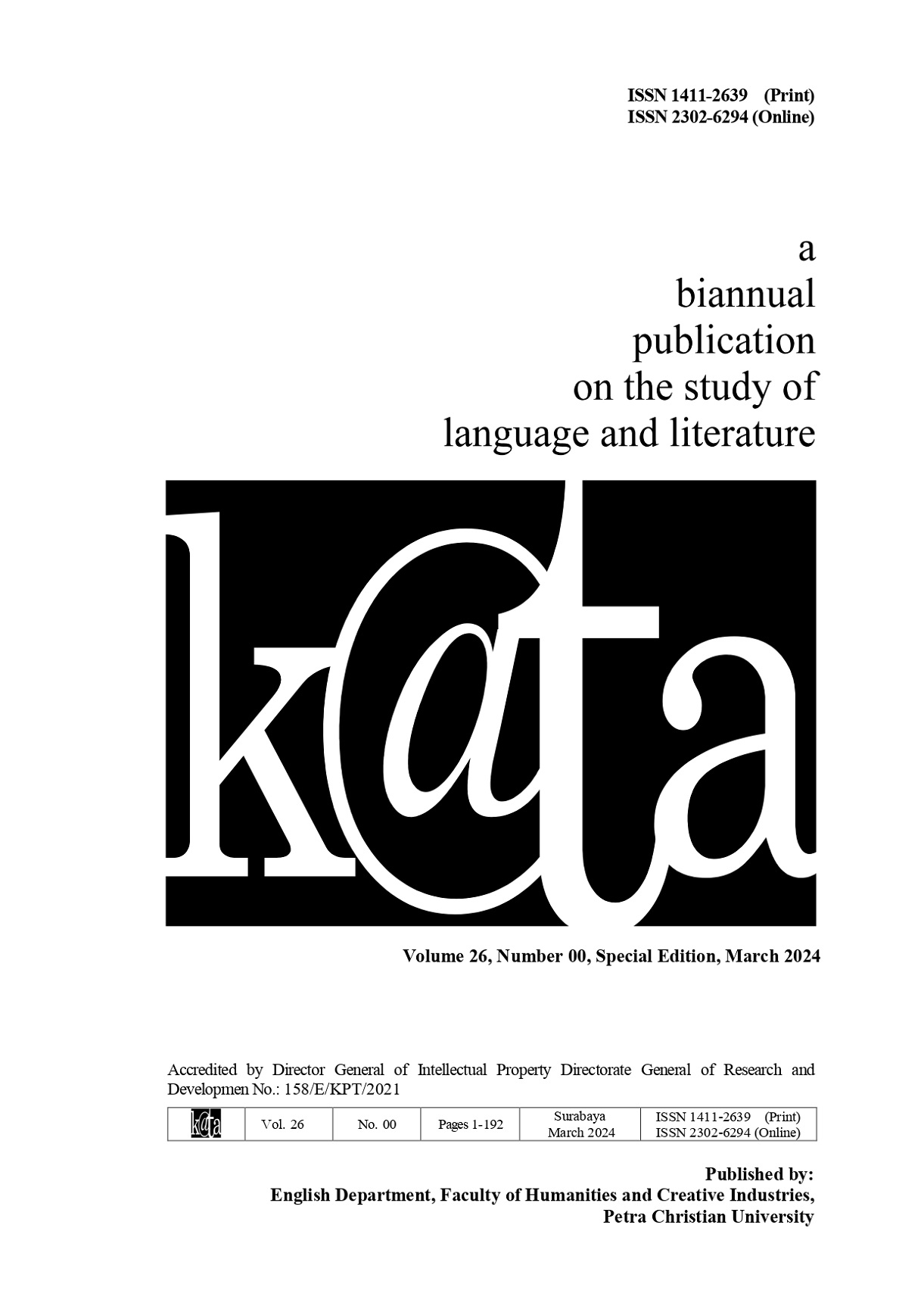‘Not Too Hot, Not Too Cold, Just Right’: Empathetic Communication of Indonesian Big Brands through YouTube during the COVID-19 Pandemic
Abstract
This article is based on an exploratory study of YouTube videos related to the COVID-19 pandemic released by the official accounts of several big brands in Indonesia. By analyzing the videos released by these companies, a combination of key messages that are professionally conveyed to present the actions taken by the brands, in response to the pandemic, with an empathetic feel was found. While there is ample evidence to map out the creative processes behind these videos, our findings show that the brands aim to cover up the techniques they employ in achieving their goals, such as the sending of excessively sympathetic messages. The findings of this study provide initial empirical evidence of Indonesian companies’ tendency to assimilate the local culture of mutual assistance and the existence of branding activities that continue to be carried out during the pandemic. This article ends with a discussion of the communication processes carried out by commercial entities in challenging times.
Downloads
References
Arieza, U. (2021, August 13). Babak belur ekonomi dihajar 1,5 tahun pandemi [Battered economy beaten by 1.5 years of pandemic]. CNN Indonesia. https://www.cnnindonesia.com/ekonomi/20210811220610-532-679242/babak-belur-ekonomi-dihajar-15-tahun-pandemi/1
Ariyanti, A. (2021, March 4). Memaknai kontraksi ekonomi Indonesia [Interpreting the contraction of Indonesian economy]. Retrieved from Kontan. https://analisis.kontan.co.id/news/memaknai-kontraksi-ekonomi-indonesia.
Baker, D. F. (2017). Teaching empathy and ethical decision making in business schools. Journal of Management Education, 41(4). https://doi.org/10.1177/1052562917699028
Bin Amran, A., Ling, L. L., & Sofri, Y. (2007). A study of corporate philanthropic traits among major Malaysian corporations. Social Responsibility Journal, 3(4), 21–30. https://doi.org/10.1108/17471110710840206
Bititci, U. S., Martinez, V., Albores, P., & Parung, J. (2004). Creating and managing value in collaborative networks. International Journal of Physical Distribution & Logistics Management, 34(3/4), 251–268. https://doi.org/10.1108/09600030410533574
Coppola, G. (2017). What is an empathy map, and why is it valuable for your business? Retrieved from
https://medium.com/swlh/what-is-an-empathy-map-and-why-is-it-valuable-for-your-business-14236be4fdf4.
Cuff, B., Brown, S. J., Taylor, L., & Howat, D. (2012). Empathy: A review of the concept. Emotion Review, Publish On. Retrieved from http://emr.sagepub.com/content/early/2014/12/01/1754073914558466.
Indria, S. S. (2022). Strategi komunikasi merek melalui pemasaran berbasis empati bagi pelaku UMKM pada masa pandemi Covid-19 di kota Bengkulu [Brand communication strategy through empathy-based marketing for MSME actors during the Covid-19 pandemic in Bengkulu City]. DIKSI: Jurnal Kajian Pendidikan dan Sosial, 3(1), 1-13. https://doi.org/10.53299/diksi.v3i1.123
Luik, J. (2022). What do Indonesian start-ups communicate during the COVID-19 pandemic? Media International Australia, 0(0), 1–14. https://doi.org/10.1177/1329878X211068463
Mututwa, W. T., & Matsilele, T. (2020). COVID-19 infections on international celebrities: Self-pre¬sentation and tweeting down pandemic aware¬ness. Journal of Science Communication, 19(05), A09.
Murdough, C. (2009). Social media measurement: It’s not impossible. Journal of Interactive Advertising, 10(1), 94–99.
Nabity-grover, T., Cheung, C. M. K., & Thatcher, J. B. (2020). Inside out and outside in: How the COVID-19 pandemic affects self- disclosure on social media. International Journal of Information Management, 55.
Nurlaela, A. N., & Pangestu, A. B. (2022). Perception and Sentiment Analysis on Empathic Brand Initiative During the COVID-19 Pandemic: Indonesia Perspective. Journal of Creative Communications, 17(2) 162–178.
Nguyen, D. (2021). Mediatisation and datafication in the global COVID-19 pandemic: on the urgency of data literacy. Media International Australia, 178(1), 210–214. https://doi.org/10.1177/1329878X20947563
Ortiz, J. A. F., Corrada, M. A. S., Lopez, E., & Dones, V. (2021). Analysis of the use of memes as an exponent of collective coping during COVID-19 in Puerto Rico. Media International Australia, 178(1), 168–181.
https://doi.org/10.1177/1329878X20966379
Peterson, D. K. (2016). Enhancing corporate reputation through corporate philanthropy. Journal of Strategy and Management. https://doi.org/10.1108/JSMA-10-2016-0068
Windahl, C. (2017). Market sense-making in design practice: Exploring curiosity, creativity, and courage. Journal of Marketing Management. https://doi.org/10.1080/0267257X.2016.1272306
Zheng, P., Adams, P. C., & Wang, J. (2021). Shifting moods on Sina Weibo: The first 12 weeks of COVID-19 in Wuhan. New Media and Society. https://doi.org/10.1177/14614448211058850

This work is licensed under a Creative Commons Attribution 4.0 International License.
This work is licensed under a Creative Commons Attribution License


















